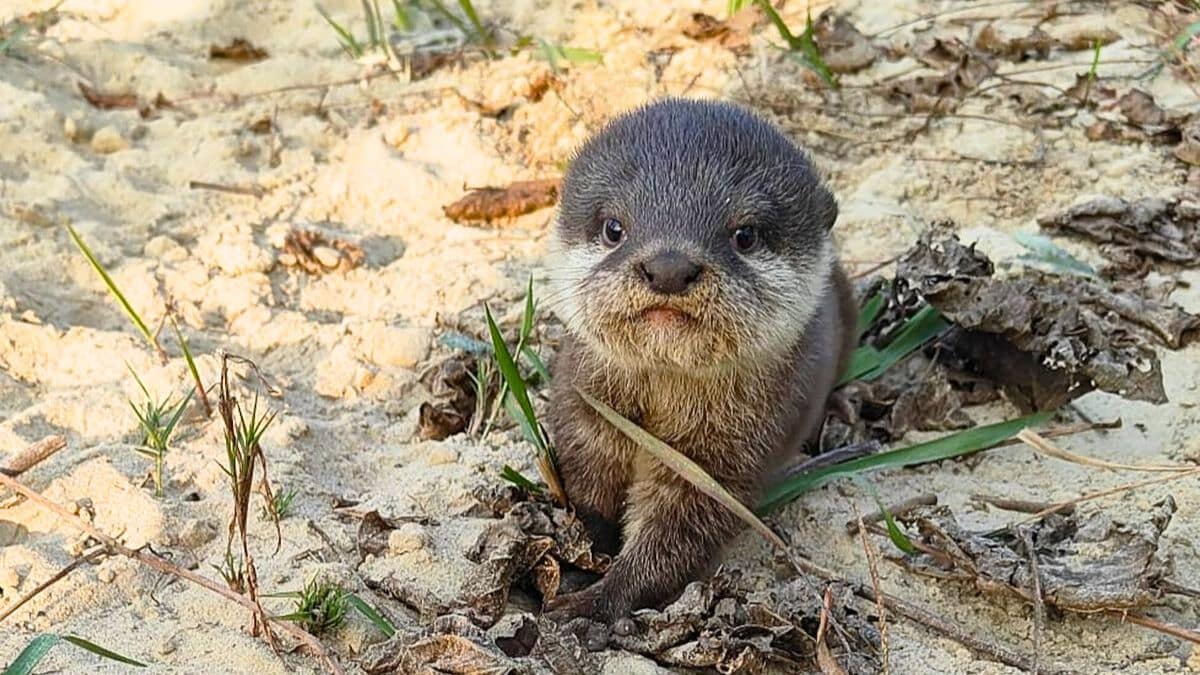In November 2024, a remarkable wildlife event unfolded in the remote hills of western Nepal. A tiny otter, long thought extinct in the country, was found alive. Known as the Asian small-clawed otter—the world’s smallest otter species—its reappearance challenges long-held scientific beliefs and brings new hope to conservationists.
The remarkable return of a species lost to history
Nepal had not recorded a confirmed sighting of the Asian small-clawed otter since 1839. Despite occasional unverified reports from regions such as Makalu Barun and Kailali, the species was widely believed to be locally extinct. As decades passed without clear evidence, most experts abandoned any realistic hope of its survival in Nepal.
Then, in late 2024, forestry officials discovered a sickly juvenile otter in the remote Dadeldhura district. At first, the animal’s identity was uncertain. It was transported to a nearby facility, where photographs were sent to wildlife experts. What they confirmed stunned everyone: the animal was indeed an Asian small-clawed otter, making its first verified appearance in the country in nearly two centuries.
In China, a mountain range disappears under a sea of solar panels – creating the largest photovoltaic landscape ever deployed in the world
At 11 years old, she discovers a giant marine reptile that had been sleeping beneath our feet for 200 million years
Scientific validation confirms a species’ survival
The discovery was officially confirmed in early 2025 by the International Union for Conservation of Nature (IUCN). Mohan Bikram Shrestha, a wildlife researcher with the Central University of Forestry Sciences in Changsha, played a pivotal role in identifying the animal. The otter was photographed and filmed before being safely returned to its native habitat.
This rediscovery ignited excitement across the scientific community. Beyond proving the otter’s continued existence, it raises critical questions about the biodiversity of Nepal’s less-explored landscapes. Could other species believed extinct still be out there, hidden in remote wilderness areas?
The fragile ecosystem still under growing threat
While the rediscovery offers a glimmer of hope, the otter’s survival remains fragile. The Dadeldhura region is undergoing rapid environmental changes. Unregulated sand and stone extraction is eroding riverbanks, while agriculture-related pollution and hydroelectric development continue to degrade freshwater ecosystems.
Harmful fishing practices also add to the pressures on the aquatic environment. These threats are not unique to the otter—they endanger a wide range of aquatic species that rely on the same shrinking habitats. Conservationists warn that without intervention, the fragile balance of this ecosystem could collapse.
Local communities play a key role in conservation efforts
In response to these challenges, local communities are stepping up. The World Wildlife Fund (WWF) has been working with the Sonaha community, an Indigenous group that has lived along the Karnali River for generations. Their collaboration focuses on sustainable fishing and habitat protection, aiming to preserve the region’s biodiversity.
The reappearance of the Asian small-clawed otter has added new urgency to these efforts. Conservation groups are now calling for the species to be formally included in Nepal’s national protection programs, ensuring that it does not disappear again—this time for good.
Key facts about the Asian small-clawed otter rediscovery
| Detail | Information |
|---|---|
| Species rediscovered | Asian small-clawed otter (Aonyx cinereus) |
| Average size | 70 to 100 cm (world’s smallest otter species) |
| Last confirmed sighting | 1839 |
| Rediscovery date | November 2024 |
| Location | Dadeldhura district, western Nepal |
| Scientific confirmation | Early 2025 by IUCN and researcher Mohan Bikram Shrestha |
| Main environmental threats | Riverbank erosion, pollution, dams, unsustainable fishing |
| Ongoing conservation efforts | WWF collaboration with Sonaha community for sustainable river stewardship |
They dumped 200,000 radioactive barrels into the Atlantic: French researchers launch an unprecedented mission to track them down
Goodbye smartphones: Mark Zuckerberg announces the end date — and what will replace them
What this rediscovery means for biodiversity conservation
The unexpected return of the Asian small-clawed otter in Nepal has become more than just a scientific milestone—it’s a symbol of resilience in the natural world. It reminds us that nature can endure, even in silence, and that there may still be hidden pockets of life in places we’ve stopped looking.
This rediscovery should serve as a wake-up call to prioritize exploration and protection of neglected ecosystems. With renewed attention and the involvement of local communities, we might not only save the otter but uncover more secrets from nature’s forgotten corners.







